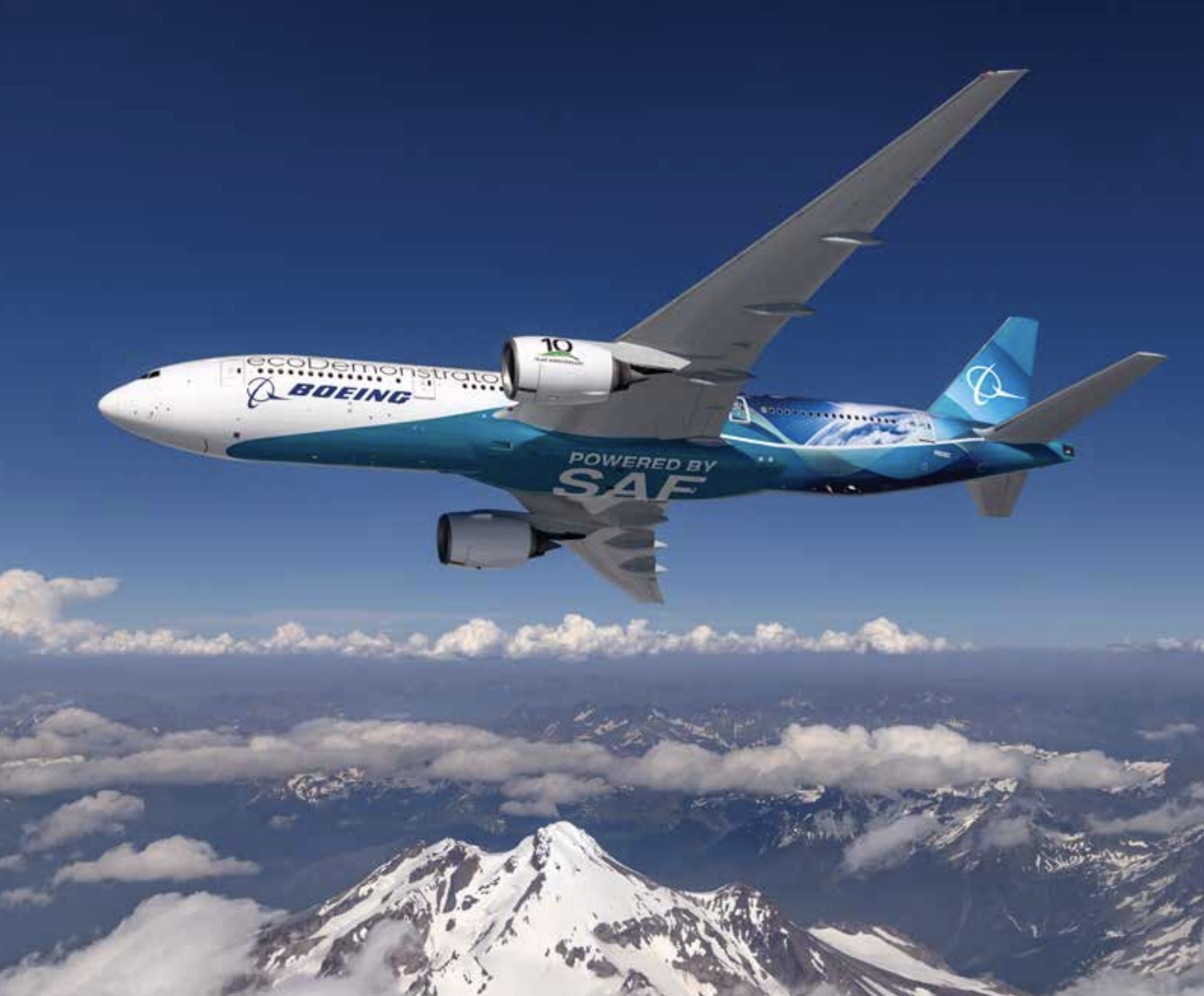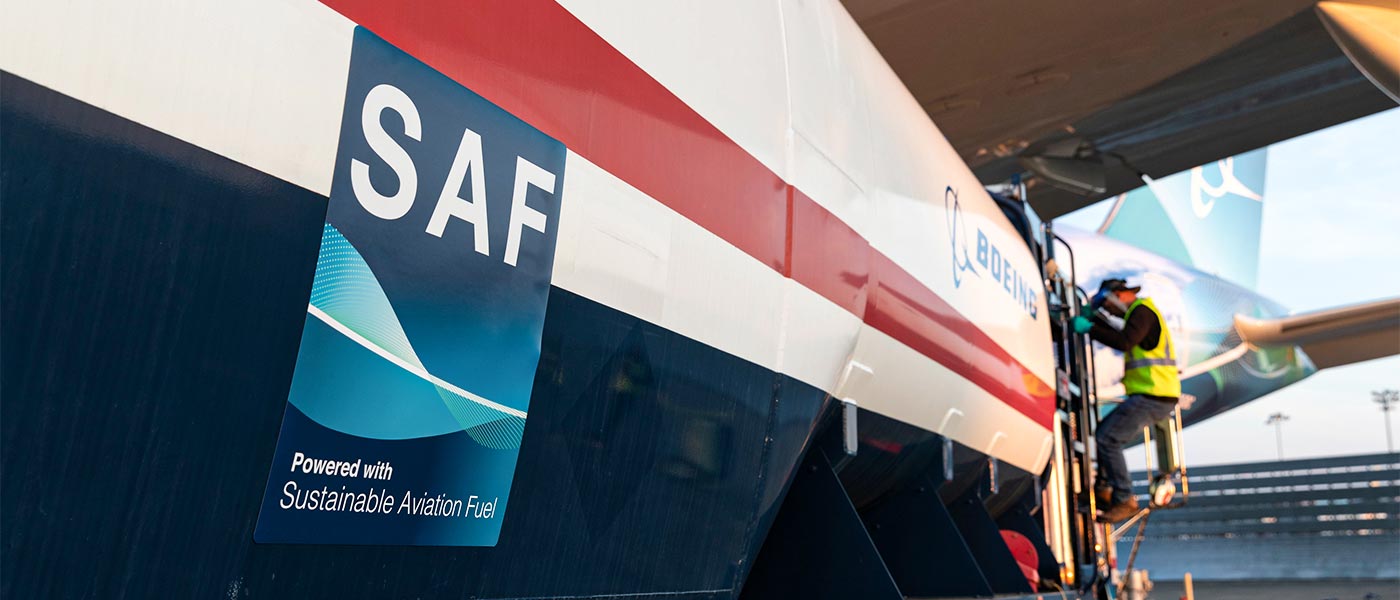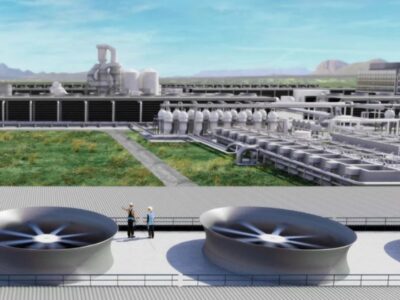The path to achieving net-zero greenhouse gas emissions in the aviation sector is complex. However, aviation giant Boeing has made its forecasting and trajectory a bit easier by releasing a new data modeling tool to the public.
It is called Cascade Climate Impact Model, and it allows users to forecast how various sustainability solutions will reduce carbon emissions. By using the modeling platform, aviation specialists can plug in various strategies such as fleet renewal, future types of aircraft (conventional, hydrogen, electric), renewable energy, operational efficiency, and other measures to predict the carbon reduction impact on their company.

Photo Courtesy Boeing
The model presents numerous charts and maps with the trajectory of CO2 reduction up until 2050, depending on the strategies used. This forecast scenario can then be used by the industry players to adjust their planning and investments in new technologies.
“We created Cascade to serve as an industry tool that creates a common framework among aviation, energy, finance, and policy,” said Boeing chief sustainability officer Chris Raymond. “By putting data first and sharing this model with the public, we are enabling collaboration, feedback, and alignment across industry, government, and others who work together to achieve a more sustainable aerospace future.”
Cascade also provided several key findings for the industry to consider. For example, to achieve the most sustainable outcome, energy use and its associated emissions must be minimized. And this, no matter whether the production, distribution, and storage of fuels include sustainable aviation fuel (SAF), hydrogen, or electricity.
Another key finding was that SAF would be the largest contributor to reducing carbon emissions. This is because it can be used in commercial airplanes today. Meanwhile, electric and hydrogen-powered aircraft will only bring a minimal reduction in CO2 emissions by 2050 due to the long development and deployment timeframes.

Photo Courtesy sustainabilitytogether.aero
Airline operators can significantly reduce emissions by renewing their fleets with fuel-efficient airplanes.
Boeing has made Cascade available to help airline operators, policymakers, and industry partners better understand “when, where, and how different fuel sources intersect with new airplane designs,” noted the company.
“We have to take a holistic view to decarbonization,” said Raymond. “And when we do that, it is clear that sustainable aviation fuel (SAF) is a necessary lever. We know it will take a ‘SAF and’ approach and not a ‘SAF or’ approach to achieving net-zero by 2050.”
To fulfill its ‘SAF and’ strategy, Boeing is involved in the development of electric-powered aircraft via its partnership with Wisk. The companies plan to bring to market the first all-electric, autonomous air taxi in the U.S.

Photo Courtesy Boeing
On the hydrogen side, Boeing has showcased six hydrogen technologies since the mid-2000 with crewed and uncrewed aircraft: these combined hydrogen fuel cells and combustion engines.





